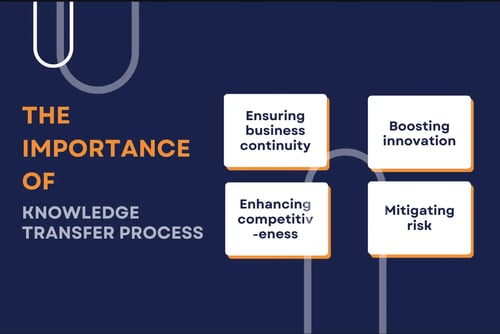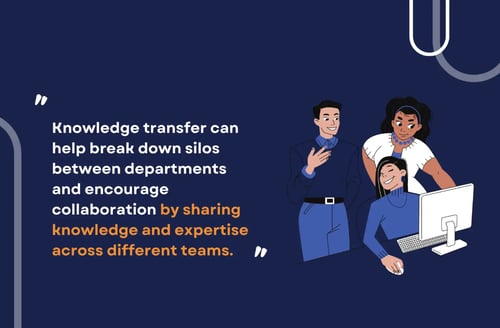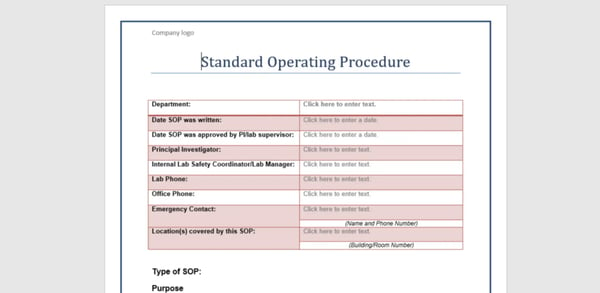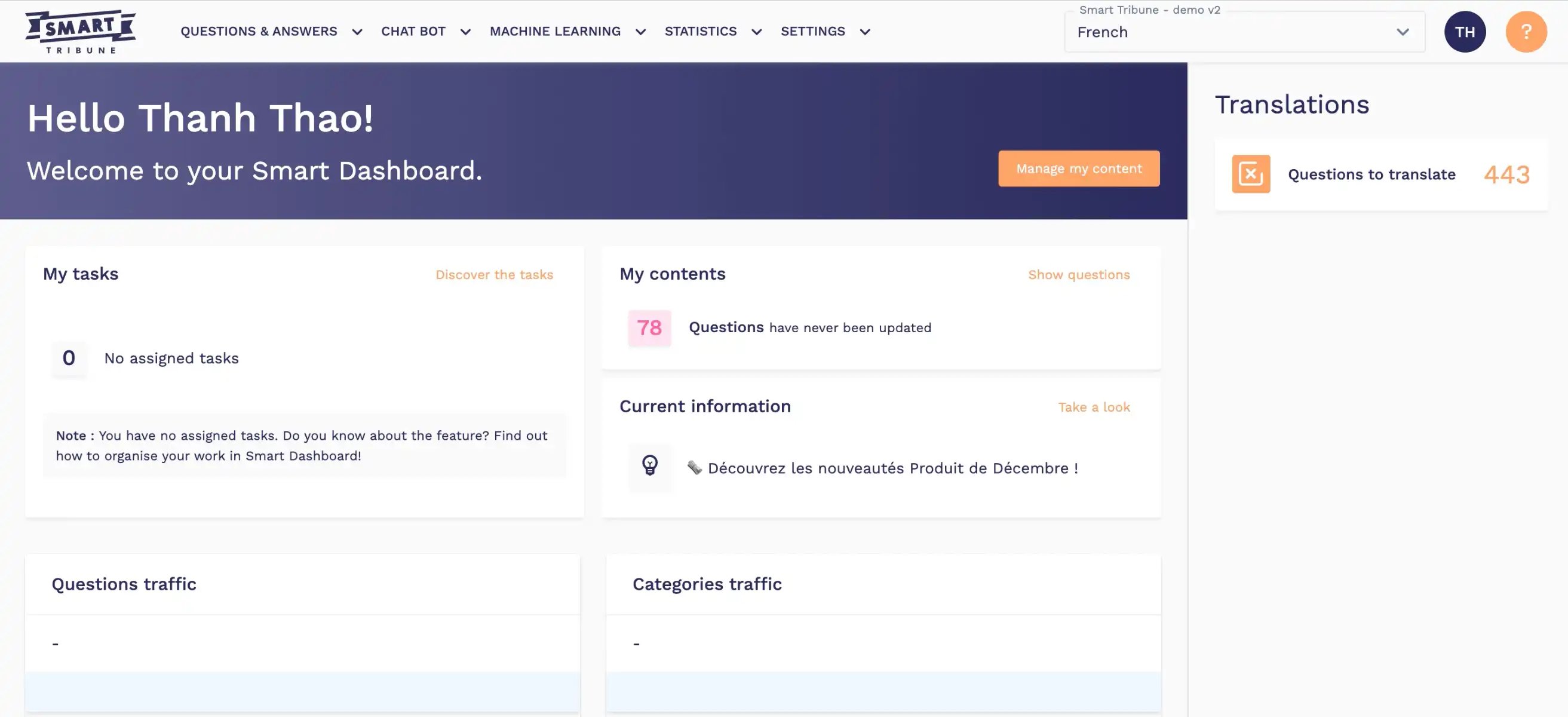
Did you know that knowledge transfer can have a significant impact on an organisation's bottom line? According to a recent study by Zippia, companies that prioritise knowledge transfer are 4.5 times more likely to have highly engaged employees. In addition, knowledge transfer can lead to about a 25% increase in productivity and a 35% decrease in employee turnover
These impressive statistics highlight that effectively running a business involves more than just providing excellent products, implementing flawless operational plans, coming up with winning marketing strategies and yielding smooth customer self-service experience. A profitable business also requires the owners to further invest in knowledge transfer to ensure the highest productivity of each individual and simultaneously, avoid friction in cooperation across departments.
But where do you start? Let this article guide you in. We get your back with:
- Knowledge transfer definition,
- Why knowledge transfer,
- Knowledge transfer use cases,
- Steps to take to transfer knowledge with ease,
- Top knowledge transfer templates
- Frequently asked questions about transferring knowledge.
Whether you're a new manager looking to develop your team or a seasoned professional seeking to refine your skills, this guide will provide you with the essential tools and techniques needed to succeed.
So let's dive in and explore the basics of knowledge transfer!

What is Knowledge Transfer?
Knowledge transfer (or KT meaning in software) refers to a process in which employees or employers share their skills, information, experience, or ideas with other departments or other individuals in a business. It can involve a variety of methods such as mentoring, training, coaching, or simply sharing information through communication channels.
Transferring knowledge across your company or organisation can spur staff to exploit technology innovation and enhance productivity along with efficiency.
The goal of knowledge transfer is to ensure that critical knowledge is passed on and retained within an organisation, team, or community. By sharing expertise and experience, individuals can build upon their successes and avoid the mistakes of others, leading to better decision-making and improved performance.
Since knowledge transmission is of paramount importance for a thriving firm, business owners may need assistance to store, manage and share the information with ease. That's when a knowledge transfer process or knowledge management system comes in handy.
A knowledge transfer system is a powerful tool that enables the knowledge transition to occur without a hitch. This tool should be software instead of tons of files and folders so that you can easily give access to your employees, tweak the application, keep up with the latest technology upheavals, and track the knowledge transfer process.
If knowledge management is not a familiar subject to you, please check our knowledge base hub for more valuable insights:
- What is knowledge management?
- The basics of creating and managing a knowledge base
- How to develop a winning knowledge management strategy within 15 minutes?
- Editable well-crafted knowledge transfer plan template
Importance of Knowledge Transfer Process
With the aim of improving efficiency, reducing errors, and promoting innovation, knowledge transfer sessions are often crucial for decision-makers, project owners and managers. Here are some key reasons why knowledge transmission is essential for these stakeholders:

- Ensuring business continuity: Knowledge transfer ensures that the organisation has a continuous supply of skilled and knowledgeable employees to sustain the business, regardless of changes in personnel, leadership, or market conditions.
- Boosting innovation: KT session encourages innovation by bringing together different perspectives and ideas from diverse sources, leading to new ways of approaching problems and identifying opportunities.
- Enhancing competitiveness: The transfer of knowledge can help an organisation stay competitive by keeping up with technological advancements, market trends, and customer demands.
- Mitigating risk: Effective knowledge transfer reduces the risk of costly errors, project delays, or operational inefficiencies that may arise due to a lack of expertise or knowledge.
Use Cases of Knowledge Transfer
Knowledge transfer is a critical process that enables organisations to share expertise, skills, and experience across teams, projects, and departments. Here are some cases that make KT session meaningful to demonstrate its importance and value:
- Onboarding of new employees: When new employees join an organisation, the KT document helps them quickly get up to speed on company policies, procedures, and best practices. Knowledge transfer to new employees also allows them to learn from more experienced team members, gaining valuable insights into the organisation's culture, values, and goals.
- Succession planning: Knowledge transfer is critical for ensuring business continuity during times of change or transition, such as when a key employee retires or leaves the organisation. By transferring their knowledge and expertise to other team members, the organisation can mitigate the risk of losing critical institutional knowledge
- Knowledge sharing across departments: Knowledge transfer can help break down silos between departments and encourage collaboration by sharing knowledge and expertise across different teams. This can lead to more efficient and effective decision-making, as well as the development of new products, services, or processes.
- Process improvement: Whenever there are many complex procedures, knowledge transfer can be used to improve processes within an organisation by identifying areas for improvement and sharing best practices across teams.
- Innovation: It can foster innovation by sharing new ideas, technologies, and practices across teams and departments.
- Knowledge retention: Knowledge transfer can be used to retain critical knowledge within an organisation, ensuring that it is not lost when employees leave or retire.

- Implementation of new technologies: When implementing new technologies or systems, knowledge transfer is essential for ensuring that team members understand how to use them effectively. Thus, KT process can reduce the risk of errors, increase adoption rates, and ultimately lead to greater productivity and efficiency.
- Best practices sharing: Knowledge transfer can help identify and share best practices across the organisation, enabling teams to learn from one another and improve their processes. This can lead to greater standardisation, consistency, and quality in the organisation's work.
- Continuous learning and improvement: Knowledge transition can facilitate a culture of continuous learning and improvement within an organisation, by encouraging team members to share their knowledge and experience with others. Ultimately, it can result in a more skilled and knowledgeable workforce, better decision-making, and greater innovation.
- Mergers and acquisitions: When two organisations merge or one acquires the other, knowledge transfer is essential to ensure that employees have the necessary information and skills to continue their work in the new organisation.
How to Effectively Transfer Knowledge?
Effective knowledge transfer requires careful planning, clear communication, and a structured approach. Here are some key steps to consider when transferring knowledge:

1. Identify the knowledge to be transferred
The first step in effective knowledge transfer is to identify what knowledge-sharing topics need to be transferred. This may involve mapping out the skills, expertise, and experience that are critical to the success of a project, process, or function.
For example, if an organisation is implementing a new technology platform, the knowledge to be transferred may include understanding how to use the platform, troubleshooting common issues, and leveraging its features to improve productivity.
2. Identify the target audience
Once the knowledge has been identified, the next step is to determine who needs to receive it. Different people learn and process information in different ways. To effectively transfer knowledge, it's essential to tailor the approach to the audience's needs and learning style.
This could involve adjusting the pace of the training, providing hands-on experience, or using real-life examples. For example, if an organisation is implementing a new marketing strategy, the target audience may include the marketing team, sales team, and customer service team.
Based on that, you may decide whether catchy word for knowledge sharing is more appropriate than formal types.
3. Choose the right method
Some individuals may learn best through hands-on experience, while others may prefer to learn through reading or listening to lectures. Thus, choosing the right method of knowledge transfer is essential afterwards.
There are many methods that can be used to transfer knowledge, including training sessions, coaching, mentoring, documentation, and job shadowing.
By selecting the appropriate method of knowledge transfer, you can ensure that the information is presented in a way that is engaging, accessible, and effective for the target audience. This can lead to better retention of the knowledge being shared and improved application of the skills being taught.
For instance, if an organisation is training employees on a new software program, a hands-on training session may be more effective than written documentation.
4. Develop a structured approach
Developing a structured approach to knowledge transfer is important because it helps ensure that the process is organised, consistent, and effective. Without a structured approach, knowledge transfer can be haphazard and inconsistent, which can lead to misunderstandings, errors, and inefficiencies.
To ensure that knowledge transfer is effective and efficient, it's important to develop a structured knowledge transfer checklist that includes clear objectives, timelines, and milestones. This can help keep the process on track and ensure that key knowledge is transferred in a timely manner.
In the case of a new product launch, for instance, the plan may call for a four-week period of systematic training to ensure that all team members are adequately taught and coordinated.
5. Create a supportive environment
If you want to get your message over, it's important to set up a conducive environment for learning. Effective transmission of knowledge is crucial since it boosts morale all around, makes workers happier, and makes it easier for them to learn new things and stay with the company longer. Organisational success and the spread of information may also be boosted by fostering an encouraging atmosphere.
This may involve encouraging team members to ask questions, providing feedback and support, and creating opportunities for practice and application of new knowledge.
For example, if an organisation is implementing a new sales process, creating a supportive environment may involve assigning a mentor to each sales team member to provide ongoing coaching and support.
6. Measure and evaluate success
To ensure that knowledge transfer is effective, measuring and evaluating a project’s success are always in need. It helps identify areas of strength and weakness, makes it possible for continual development, and offers proof of the impact that the knowledge transfer activities have had.
This may involve collecting feedback from team members, tracking performance metrics, and monitoring progress against objectives.
One such common example is when an organisation is implementing a new project management process, monitoring success may involve tracking project timelines and budget, and collecting feedback from team members on the effectiveness of the new process.
Best Knowledge Transfer Document Template
Standard Operating Procedure (SOP) Template

This KT document format is ideal for documenting step-by-step processes for specific tasks or activities.
The template typically includes sections for purpose, scope, responsibilities, materials needed, procedures, and references. SOPs are commonly used in manufacturing, healthcare, and other industries where consistent processes are essential.
Using an SOP template helps businesses document their processes and procedures in a consistent and standardized format. This consistency can help improve quality, reduce errors, and increase efficiency.
Standard Operating Procedure (SOP) Template
Use this template to establish SOPs for specific farm tasks or chores. An SOP is a good idea for any task or chore that is to be accomplished more than once. Consider that farm tasks may take place in the office, in a processing facility, in the barn, in the field, or off the farm.
|
Name of specific task or chore. |
| Objective/purpose – Briefly describe why the task is accomplished (the purpose of the task). |
| Scope – Where and to whom does the SOP apply? |
| Responsibility – Who is responsible for making sure the task is completed? Proper names can be used for this section. However, the worker’s title such a crew chief, foreman, or driver might be more useful. Consider including the skill level necessary of the worker. |
| Materials – What specific items (tools, equipment, instruments, supplies, etc.) are needed to complete the task? |
| Procedure – What are the steps to the task, in order (from start to finish)? Include preparation steps. Use short, direct sentences and simple words wherever possible. Bulleted or numbered lists are usually good. |
| Verification/documentation – How will you verify that the procedure was completed correctly and what records will you keep? |
| Date |
| SOP Writer (name) |
Work Instruction Template
This template is similar to an SOP template but is used for documenting more detailed instructions for a specific task or activity. It typically includes sections for purpose, scope, materials required, safety precautions, step-by-step instructions, and references.
Project Work Instruction Template
| PROJECT NAME | |
| PROJECT DATE | |
| PERSON RESPONSIBLE | |
| PROJECT APPROVED BY | |
| DESCRIPTION OF PROJECT | |
| OBJECTIVE | |
| ACTION | |
| WHAT TO COMPLETE |
Besides those templates above, you can definitely leverage advanced technology to transfer knowledge without a hitch. Smart Knowledge is undoubtedly a priceless tool to go for as you can ensure every individual has access to the information hub and harness it in the upcoming tasks.
Smart Tribune also goes the extra mile with Smart Dashboard for you to seamlessly monitor and manage knowledge.

Can’t imagine how wonderful Smart Knowledge is? Book a demo with us to find out why over 150 businesses love our knowledge management system!
FAQs about Knowledge Transfer
1. What is KT? - What is knowledge transfer?KT, or knowledge transfer meaning refers to the process of transferring knowledge, skills, or expertise from one individual or group to another.
2. What is the role of technology in knowledge sharing management?The rationale for the transfer of technology can play a significant role in knowledge-sharing management. By providing tools and platforms for sharing, storing, and accessing information, it influences almost every major part of the process.
Examples of technology used in knowledge sharing management include collaborative software, knowledge management systems, and learning management systems.
3. What is KT session?A KT session is a meeting or discussion designed to facilitate knowledge transfer between individuals or groups. It may involve sharing best practices, lessons learned, or other insights related to a specific topic or project.
Final Thoughts on Knowledge Transfer
Knowledge transfer is the lifeblood of any organisation, allowing it to thrive and evolve over time. By embracing knowledge transfer as a fundamental aspect of organisational culture, businesses can create a dynamic environment of innovation and progress. To streamline the knowledge transfer process and ensure the highest quality of it, employ Smart Knowledge as your silver bullet.
Whether through formal training programs, peer-to-peer mentorship, or simple conversations around the water cooler, knowledge transfer is the foundation upon which new ideas are born and great accomplishments are achieved.
So, let's all commit to sharing our knowledge and expertise, and watch as our businesses and communities flourish and grow!
Should you have any question, don’t hesitate to contact us.



.png)



